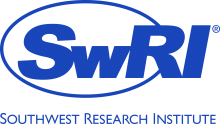LEVERAGING GAZE AND SPEECH DATA TO IDENTIFY INDICATORS OF FATIGUE IN RADIOLOGY READINGS
Diagnostic errors committed by radiologists can have serious consequences on patient outcomes. These diagnostic errors have considerable impact in the field of oncology as most errors occur during radiological diagnosis. Radiologist fatigue is widely accepted as a significant contributor to diagnostic errors and is expected to increase as physician workloads have climbed in recent years. Both eye gaze and speech patterns have been studied to identify possible indicators of fatigue outside the field of radiology. Recent developments in machine learning have enabled more successful fatigue models to be developed, based on deep learning architectures such as convolutional neural networks and recurrent neural networks. Southwest Research Institute is currently collaborating on a project to perform automated pulmonary nodule detection using data from radiology readings. This project has produced a large dataset of gaze, speech, and fatigue survey data collected from radiologists as they read chest radiographs containing potential nodules. This dataset provides the opportunity to build novel models to predict radiologist fatigue and explore the impact on diagnostic errors.
A dataset of physician speech, gaze and fatigue data will be compiled. Self-reported fatigue metrics from a standard survey will be used to build training labels. Machine learning models will be trained on gaze and speech data through pre-extracted features and raw data streams. The best machine learning models generated from this training phase will be assembled to create a predictive model capable of generating fatigue predictions based on both speech and gaze data.
Data collection for this project is nearing completion and much of the data infrastructure has been built. A large dataset has been developed to organize and store this collected data. Database access scripts have been written to make updates to the database, pull data for local use, and for data preprocessing. A suite of scripts has been developed to analyze physician performance on the pulmonary nodule detection task to identify diagnostic errors. Currently in development is a statistical analysis script to analyze the correlations between each field in the fatigue survey and the number of diagnostic errors committed by the responding physician. These results will guide the development of the multi-class label to be used for training machine learning models.

